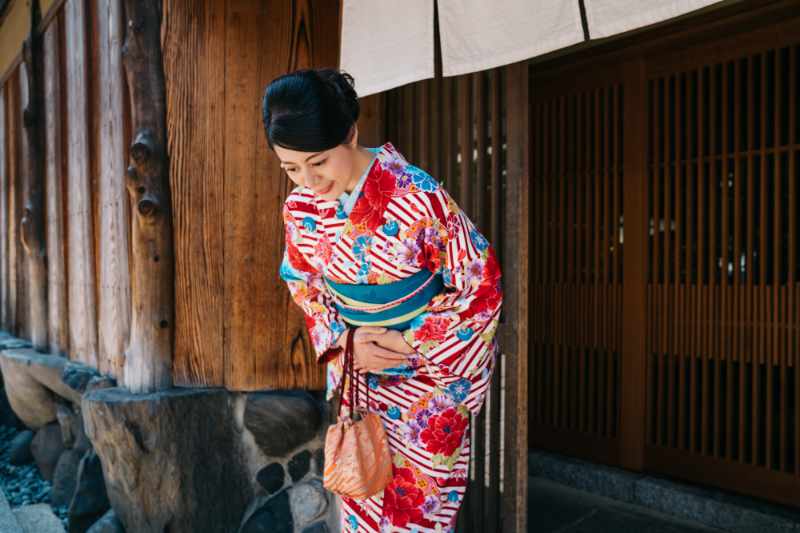Memahami Bioskop: Sejarah Singkat
Seiring perkembangan zaman, teknologi juga berubah. Bioskop adalah salah satu bidang yang ikut berkembang sejalan dengan perkembangan teknologi. Bioskop sendiri berasal dari bahasa Belanda, bioscoop yang berarti sebuah gedung yang digunakan untuk menayangkan film. Kata ini kemudian diadaptasi dalam bahasa Indonesia pada era penjajahan, menjadi bioskop. Sejarah bioskop di Indonesia dimulai pada awal abad ke-20, tepatnya pada tahun 1900-an. Tepatnya pada masa penjajahan, film-film yang diputar didominasi oleh film asing. Pada saat itu, Inggris dan Amerika menjadi penghasil film terbesar. Meski begitu, di Indonesia, film lokal juga sudah mulai diproduksi oleh beberapa perusahaan film. Pada tahun 1930-an, terdapat sekitar 27 perusahaan film lokal yang beroperasi di Indonesia. Di tahun-tahun selanjutnya, bioskop menjadi semakin berkembang dan film lokal semakin banyak diproduksi. Bahkan, pada era 1960-an, film lokal telah menjadi primadona di bioskop Indonesia dan mencatatkan sejumlah rekor penonton.
Pada masa Orde Baru, bioskop di Indonesia mengalami kemajuan yang cukup pesat. Hal ini disebabkan oleh adanya dukungan dari pemerintah. Pemerintah melalui Departemen Penerangan memberikan subsidi kepada para produsen film dan mengeluarkan regulasi-regulasi yang menguntungkan industri perfilman nasional. Pada masa ini, film-film yang diproduksi semakin bervariasi dan tidak hanya bergenre drama, tetapi juga bergenre komedi, horror, action, dan masih banyak lagi.
Sejalan dengan perkembangan teknologi, bioskop juga mengalami perubahan. Pada era 1980-an, bioskop konvensional (tunggal) yang hanya memiliki satu layar mulai ditinggalkan. Bioskop mulai beralih ke multiplex, yang memiliki beberapa layar. Hal ini membuat penonton memiliki pilihan film yang lebih banyak. Selain itu, pada era 2000-an, bioskop juga mulai menggunakan teknologi digital. Hal ini menghasilkan kualitas gambar dan suara yang lebih jernih serta mengurangi biaya produksi film dan pemutaran film di bioskop.
Dalam sejarah bioskop Indonesia, terdapat beberapa nama besar yang menjadi pelopor dalam dunia perfilman nasional. Salah satu yang terkenal adalah Usmar Ismail. Beliau memiliki peran yang besar dalam mengembangkan industri film nasional. Usmar Ismail terbilang sukses dalam memproduksi film-film yang diputar di bioskop Indonesia. Selain itu, terdapat pula Djamaluddin Malik, Riri Riza, Hanung Bramantyo, dan banyak lagi.
Dalam perkembangannya, industri film di Indonesia mengalami pasang-surut. Namun, hingga saat ini bioskop masih tetap menjadi tempat yang populer dikunjungi. Di Indonesia sendiri, terdapat beberapa perusahaan bioskop besar seperti Cinema 21, CGV, dan XXI.
Modern Cinema: The Evolution of Bioskop
Bioskop or cinema has come a long way since its first appearance in Indonesia in 1900. From modest open-air screenings using a black and white reel to the current advanced digital system, the evolution of bioskop has been impressive. The changes can be attributed to the technological advancements, as well as the improvements in architectural designs, and cultural influences. Here are some aspects of modern cinema in Indonesia.
The first notable aspect of modern cinema is technology. From a technical perspective, the quality of the bioskop has dramatically improved over the years. Digital innovation has allowed for a more immersive cinematic experience. Screens have gotten more extensive, and the resolution has become sharper. With the growing popularity of 3D and 4D technology, cinema-goers can have an ultimate cinema experience with high-quality sound and spatial experiences. Consequently, the quality of film production has to match increasingly high standards, thus pushing filmmakers to produce better quality films with massive budgets.
Next is architectural design. The design of bioskop buildings has undergone tremendous changes. Gone are the days of simple open-air settings. Technological advancement has brought about modern, well-furnished, and stylish cinemas. Cinemas are now equipped with luxurious seats, powerful air conditioning systems, and unbeatable sound systems. The traditional one-size-fits-all cinemas have also given way to specialized theaters with distinct themes. There are theaters for blockbusters with larger screens, comfortable couches for couples to cuddle during romantic movies, and play areas to keep children entertained while parents enjoy their movies.
Lastly, cultural influence has led to the incorporation of distinctive features in Indonesian cinemas. Indonesian cinema-goers have diverse preferences. Therefore, cinema owners have incorporated traditional elements into their cinemas to attract more people. Some bioskop owners have introduced traditional decorations, paintings, and sculptures to create unique cinema experiences. Others have introduced food and snacks that are native to Indonesia, such as sate and krupuk, to give cinema-goers a taste of locally sourced food.
In conclusion, the evolution of bioskop has brought about significant changes in Indonesia’s cinema industry. Technological advancements, architectural design, and cultural influence have all contributed to the modernization of cinemas. The outcome of this advancement is a better cinematic experience and a more competitive film industry. With new technologies and innovations on the horizon, the future of bioskop in Indonesia looks bright.
Bioskop Culture: Movies as a Social Experience
Going to the cinema in Indonesia isn’t just about watching the latest blockbuster or award-winning flick; it’s also an opportunity to socialize with friends and family. Hanging out at the cinema is deeply ingrained in Indonesian culture.
While it’s true that streaming services like Netflix and Disney+ are taking over, the bioskop culture in Indonesia is still going strong. A night at the cinema is seen as an event that brings people together. Group chats are made to organize the outing, and friends and family come together to share snacks, laughter, and stories.
Many Indonesians also use the cinema as a place to escape from everyday life or to celebrate special occasions. It’s not uncommon to see entire families at the cinema, from grandparents to young grandchildren. People dress up for the occasion and arrive early to get the best seats and enjoy some social time before the movie starts.
Moreover, bioskop culture is also an affordable pastime for many Indonesians. For example, in Jakarta, you can catch a movie at a cinema for as little as IDR 25,000 (equivalent to USD 1.7). This makes it accessible to people from all walks of life, regardless of their social status or income.
That said, the experience of going to the cinema in Indonesia is quite different from what you’ll find in other countries. For one, it’s not uncommon for people to chat or make noise during the movie. This behavior is accepted in Indonesia, as watching a movie is seen as a social activity.
Another unique aspect of bioskop culture is the advertisement and trailers before the film. Usually, you’ll see a mix of local and international trailers, dubbed or subtitled in Indonesian. This can be an excellent opportunity for foreigners to improve their language skills and learn about the latest Indonesian film releases.
In conclusion, the bioskop culture in Indonesia is vibrant and lively, offering more than just a movie-watching experience. It’s a way for people to socialize, escape the daily grind, and enjoy affordable entertainment with their loved ones.
The Future of Bioskop: Technology and Consumer Trends
As technology continues to advance and consumer trends change, bioskop must adapt and innovate to remain relevant and successful. Here are five potential developments in the future of bioskop:
The Rise of Virtual Reality
Virtual reality (VR) technology is becoming increasingly popular in the entertainment industry. In many countries, including Indonesia, several bioskop have started offering VR experiences alongside their traditional screenings. Instead of watching a movie on a screen, viewers can put on a VR headset and feel like they are inside the movie. As VR technology improves, bioskop may start incorporating it into more of their offerings, potentially even allowing viewers to create their own virtual environments or interact with others in the cinema.
Personalized Experiences
Consumers today value personalized experiences, and bioskop are no exception. As technology improves, bioskop may start offering more personalized experiences to viewers. For example, viewers could choose their own seats, food and drink options, and even the movie they want to watch. Some bioskop are already experimenting with this, allowing viewers to order food from their seats and providing personalized recommendations based on their past viewing habits.
Integration with Social Media
As social media becomes more integrated into our lives, bioskop may start incorporating it into their offerings. For example, bioskop may allow viewers to check in on social media or share photos and updates during the movie. In some cases, bioskop may even use social media to interact with viewers during the movie, such as by responding to tweets or Instagram posts.
More Diverse Content
As consumer preferences change, bioskop must adapt by offering more diverse content. This could include a wider range of movie genres, as well as more events and experiences beyond traditional movie screenings. For example, some bioskop may start offering live music performances or theater productions alongside movies. Additionally, bioskop may start offering more content targeted towards specific niches or demographics, such as families with young children or fans of a particular genre or franchise.
Increased Emphasis on Sustainability
As concerns about climate change and sustainability continue to grow, bioskop may need to become more environmentally-friendly to remain relevant. This could include implementing more sustainable practices in their operations, such as reducing waste or using renewable energy sources. Additionally, bioskop may start offering more content that emphasizes sustainability, such as documentaries about environmental issues or movies that promote eco-friendly lifestyles.



